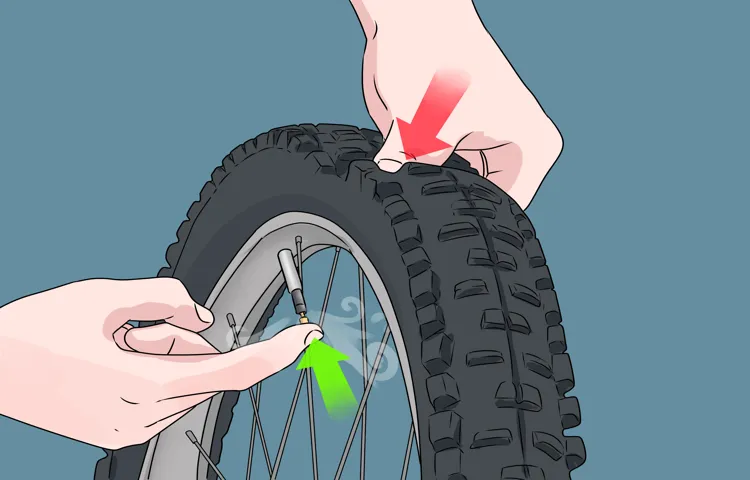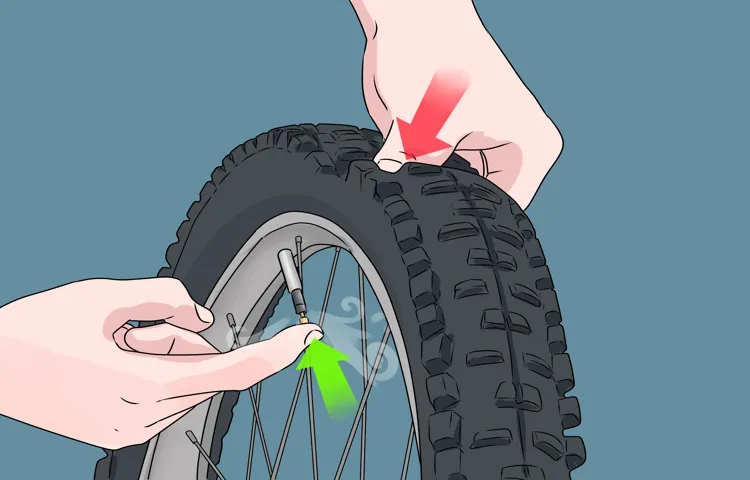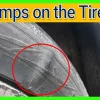Have you ever noticed that your car tire looks a bit deflated or you hear a constant hissing noise? These could be signs that your tire needs air or that there is a leak. Without proper tire pressure, your driving experience could become dangerous or cause damage to your vehicle. Knowing how to release air from your car tire is crucial for maintaining proper pressure levels.
In this blog post, we will explore the steps needed to release air from your tire, the tools required, and other important tips for keeping your tires healthy and safe on the road. So buckle up and let’s dive in!
Table of Contents
Gather Necessary Tools
If you need to let air out of your car tire, the first step is to gather the necessary tools. You’ll need a tire pressure gauge, a valve stem tool, and a tire inflator/deflator. You can find these tools at your local auto parts store or online.
Once you have the tools, you’ll need to locate the valve stem on the tire you want to deflate. Unscrew the valve cap and use the valve stem tool to depress the valve core, allowing air to escape. Use the tire pressure gauge to check the pressure in the tire periodically until you have reached the desired level.
Remember to check the pressure again when you’re finished to ensure that it’s at the correct level. With a little bit of practice, deflating a tire can be quick and easy.
Tire Gauge
When it comes to checking your tire pressure, having a tire gauge is crucial. Before you start, make sure you have all the necessary tools including a tire gauge, a tire pressure chart, and a source of compressed air. The tire gauge will allow you to measure the pressure in each tire, and the tire pressure chart will tell you the optimal pressure for your particular vehicle.
You can typically find this information in your owner’s manual or online. Finally, you’ll need a source of compressed air, like an air compressor or a gas station with an air pump. Once you have all of your tools, you’re ready to check your tire pressure and make sure you’re driving on safe, properly inflated tires.
Remember, it’s important to check your tire pressure regularly to ensure optimal performance and safety on the road.

Valve Stem Tool
If you’re looking to change your tires or repair a puncture, you’ll need to remove the valve stem from your tire. This can be tricky without the right tool. That’s where a valve stem tool comes in handy.
To get started, gather all the necessary tools. You’ll need a valve stem tool, a pair of pliers, a valve core removal tool, and a replacement valve stem. It’s important to have all the tools on hand before you start working on your tires.
Once you have everything, you’re ready to start removing the valve stem from your tire. With the right tools, the task is straightforward and easy to complete. Whether you’re a professional mechanic or a DIY enthusiast, a valve stem tool is an essential tool for anyone who works on cars and bikes.
So, make sure you have one in your toolbox the next time you need to change a tire or repair a puncture.
Air Pump
When it comes to inflating your bike tires or exercise ball, a reliable air pump is a must-have tool. Before you start pumping away, make sure you gather all the necessary tools for the job. First and foremost, you’ll need your air pump itself – make sure it’s compatible with the valve on your equipment.
Some pumps come with interchangeable nozzles, so check that you have the right one for your bike or ball. You’ll also need a pressure gauge to ensure that you’re not over-inflating your equipment, which could lead to dangerous or uncomfortable situations. If you don’t have a gauge built into your pump, you can purchase a separate one at any sporting goods store.
Finally, make sure you have a pump needle handy if you plan to inflate any balls. With these tools in hand, you’ll be ready to tackle all your inflating needs with confidence.
Locate Valve Stem
If you need to let air out of a car tire, the first step is to locate the valve stem. This small metal protrusion can usually be found on the rim of the tire and is used to both inflate and deflate the tire. To let air out, you will need a valve stem tool or a small instrument that will depress the center pin inside the valve stem.
You can purchase these tools at any auto parts or hardware store. Once you have the tool, firmly place the tip onto the center of the valve stem and press down. You may hear a hissing sound as the air escapes, and you should continue until the desired amount of air has been released.
Remember to check your tire pressure with a gauge afterwards to make sure it is still within safe limits. It’s always better to let a little air out at a time and check repeatedly until you reach the desired pressure, rather than letting too much air out all at once.
Visualize Valve Stem
When it comes to maintaining your tires, it’s important to know how to locate the valve stem. The valve stem is a small protrusion that extends out from the wheel rim and is used to inflate and deflate the tire. While it may seem like a simple task, locating the valve stem can sometimes be a bit tricky.
One easy way to find it is to look for the metal cap on the end of the stem. Once you locate the cap, simply unscrew it and you’ll have access to the valve stem. Another tip is to use a flashlight to help you locate the stem if it’s not readily visible.
Remember to always check your tire pressure regularly and keep your tires properly inflated to ensure a safe and smooth ride.
Don’t Remove Valve Cap
When it comes to maintaining your vehicle’s tires, one of the most important things to remember is to never remove the valve cap. The valve cap serves as a protective cover for the valve stem, which is the mechanism used to inflate and deflate the tire. Without the valve cap in place, dirt and debris can easily find their way into the valve stem, causing damage over time.
To locate the valve stem, simply look for a small protrusion on the side of the tire. It’s important to check your tire pressure regularly and ensure that the valve cap is securely in place to prevent any potential damage. By taking good care of your tires, you can increase their lifespan and ensure that your vehicle remains safe and reliable on the road.
So next time you check your tires, remember to keep the valve cap on and protect your valve stem.
Remove Valve Stem Cap
If you need to let some air out of your car tire, one way to do it is by removing the valve stem cap. This small cap covers the valve stem, which is where you attach the air hose or pressure gauge. To remove the cap, simply twist it counterclockwise by hand.
You may need to use pliers if it’s stuck or stubborn. Once the cap is off, you can depress the valve stem with a pen or similar tool to release air. Be sure to do this slowly and carefully, as over-deflating a tire can be dangerous.
When you’ve let out enough air, replace the valve stem cap by twisting it back on clockwise. It’s important to keep the valve stem and cap clean and free of debris, as dirt or dust can cause leaks or damage. Regularly checking and adjusting your tire pressure can improve handling, fuel economy, and safety.
So, grab your trusty pen and get ready to let some air out!
Use Valve Stem Tool to Press Down on Valve Stem
If you need to let some air out of your car tire, you can easily do it with a valve stem tool. This tool allows you to press down on the valve stem, releasing the air slowly and safely. Make sure your car is parked on a level surface and the emergency brake is engaged before attempting to release any air.
Once you have the valve stem tool, insert it onto the valve stem of the tire you wish to deflate. Press down on the tool to open the valve, and let the air out while keeping an eye on the pressure gauge. It’s important not to over-deflate your tires, as this can lead to poor handling and excessive wear.
Check the tire pressure regularly to make sure it is within the recommended range. Remember, maintaining proper tire pressure is crucial for your safety on the road and the longevity of your tires.
Check Tire Pressure with Tire Gauge
If you need to let air out of a car tire, the first step is to use a tire gauge to check the tire pressure. This tool can be purchased at any auto or hardware store and is relatively easy to use. Simply remove the cap from the valve stem of the tire, and firmly press the tire gauge onto the stem.
The tire gauge will provide a reading of the air pressure in the tire, which can be compared to the recommended pressure listed in the owner’s manual or on the tire itself. If the pressure is too high, you can use the tire gauge to release some air by pressing the gauge onto the valve stem and holding until the hissing sound of air escaping stops. It’s important to only let out small amounts of air at a time, as overdeflating the tire can cause damage or loss of control while driving.
Check Tire Pressure Again After Releasing Air
After releasing air from your tires, it’s important to check the tire pressure again using a tire gauge. This will ensure that you have the correct tire pressure and avoid any potential issues down the road. A tire gauge is a simple tool that allows you to measure the tire pressure accurately.
To use it, remove the valve cap, press the gauge onto the valve stem, and read the measurement. Make sure to check the pressure on all four tires, as they may differ slightly. Having the correct tire pressure improves the handling and fuel efficiency of your vehicle, so it’s important to check it regularly.
Remember, a low tire pressure increases your chance of a blowout or flat tire, while overinflated tires put unnecessary strain on your vehicle’s suspension. Keep your tires at the recommended pressure and stay safe on the road.
Re-inflate Tire to Desired Pressure
If you accidentally overinflate your car tire and need to remove some air, there are a few steps you can take to let out the excess pressure safely. First, locate the valve stem on your tire, which is typically located on the rim. Remove the valve stem cap and use a small tool like a screwdriver or valve core remover to press down on the valve core inside the stem.
This will release air from the tire. Be sure to monitor the pressure as you release air, using a tire pressure gauge to achieve the desired pressure. Once you have removed the necessary amount of air, replace the valve stem cap and check the pressure again to ensure it is at your desired level.
If you’re unsure about what PSI level your specific car tire requires, you can find that information in the owner’s manual or on a sticker inside the driver’s side door. Remember, it’s important to maintain tire pressure within the recommended levels to ensure your vehicle handles well and gets the best gas mileage possible.
Conclusion
In conclusion, letting out air from a car tire is a simple task, but it requires some patience and caution. Remember to locate the valve stem, remove the valve cap, press the valve stem pin with a tool or your finger, and wait for the air to escape. And don’t forget to check the tire pressure regularly to ensure your safety and the performance of your vehicle.
As someone wise once said, “letting go of air can be deflating, but it’s a necessary process for a smoother ride.” So go ahead, deflate that tire, and hit the road with confidence!
FAQs
Why is it important to let air out of a car tire?
It is important to let air out of a car tire to avoid over-inflation or to adjust the tire pressure according to the manufacturer’s specifications.
How often should I let air out of my car tires?
You should check your car tire pressure regularly, at least once a month, and let out air if necessary to maintain the recommended pressure.
What tools do I need to let out air from my car tire?
You will need a tire pressure gauge and a valve stem tool or a screwdriver to let out air from your car tires.
What is the proper way to let air out of a car tire?
To let air out of a car tire, first remove the valve cap, then insert the valve stem tool or screwdriver into the valve stem and press down gently to release air. Check tire pressure with a gauge to achieve the desired pressure.
Can I let out too much air from my car tire?
Yes, you can let out too much air from your car tires, which can lead to under-inflation and cause other issues such as poor fuel efficiency, uneven tire wear, and reduced handling and braking stability.
What should I do if I accidentally let out too much air from my car tire?
If you accidentally let out too much air from your car tire, you can fill it up with air using a tire inflator or visit a tire shop for professional help.
Is it safe to drive with an under-inflated car tire?
No, it is not safe to drive with an under-inflated car tire as it can cause blowouts, reduced traction, and poor handling, which can lead to accidents.



